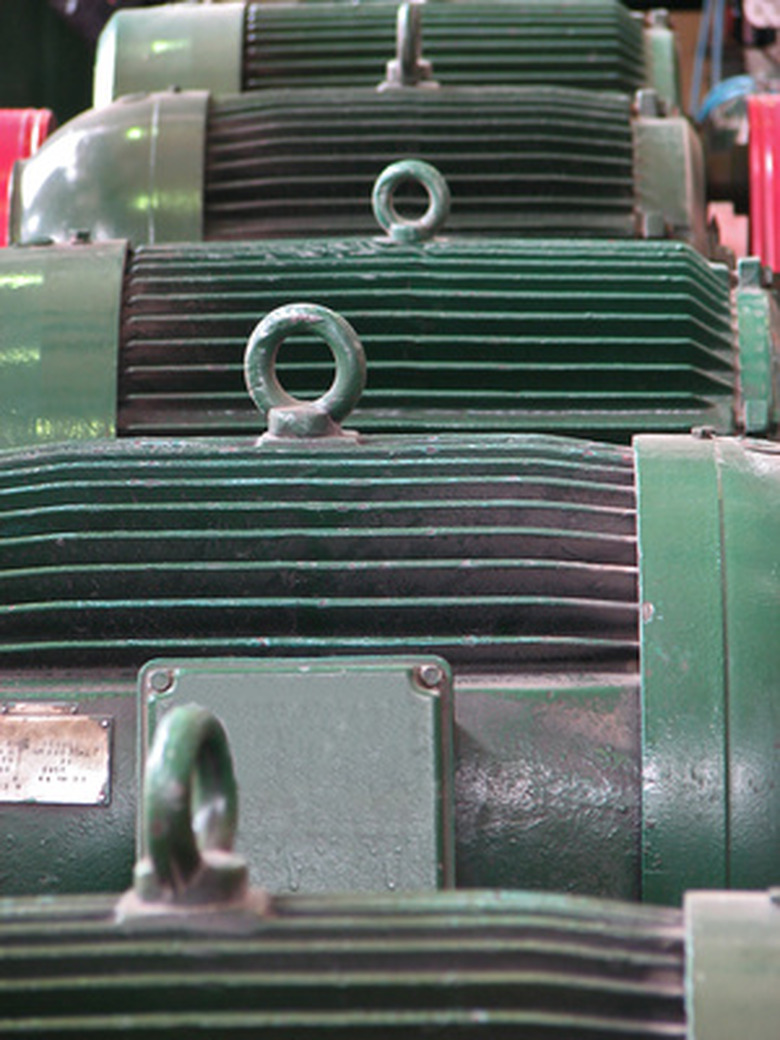How To Choose Proper Heater Sizes For Motor Starters
Motor starters are used to protect motors from being damaged by overloads. As relatively expensive pieces of equipment which can easily sustain heat damage from persistent, low level overloads, motors need protection which is more sensitive than what circuit breakers can offer. Motor starters are designed to handle the full load motor currents, and their heaters are sized to protect a motor with a particular horsepower rating. The heater will cause the motor starter to trip if the rated current is exceeded over a period of time and, while the starter is rated for the motor current or higher, the heater must be sized to exactly match the motor.
Gathering Information
Step 1
Find the system voltage and whether it is single or three-phase. This information can be found in the documentation for the installation and on equipment nameplates.
Step 2
Find the motor horsepower and full load current on the motor nameplate.
Step 3
Find the starter manufacturer and starter size on the starter or contactor nameplate. This information is found either on the motor control center housing the starter or inside the starter on the contactor itself.
Step 4
Get the manufacturer heater tables from the installation documentation or from the manufacturer
Choosing the Heater
Step 1
Ensure that the manufacturer's table is valid for the voltage and phase of the system. Small systems will be single phase, 230 V or three-phase, 208 V and tables will list starter sizes of 00, 0, 1 and 2. Larger systems will be three-phase and 460 V or higher.
Step 2
Look up the starter size in the table. There are eleven sizes from 00 to 9. Each size will have a list of currents or current ranges. The smaller sizes will have currents ranging from a fraction of an amp to twenty or thirty amps. The larger sizes will have a list with up to hundreds of amps.
Step 3
Choose the starter heater from the list to closely match the full load current of the motor. Look up either the range which includes the value of the motor full load current or the value which is the next highest and then choose the corresponding heater. This heater will protect the particular motor.
Things Needed
- Circuit voltage and phase
- Motor horse power
- Motor full load current
- Starter size
- Starter manufacturer
- Manufacturer heater tables
Warning
Motor starter heaters and motors heat up depending on the ambient temperature. Manufacturer tables assume the motor and the starter are operating at the same ambient temperature. If that's not the case, contact the manufacturer for help in choosing an appropriate starter heater.
Cite This Article
MLA
Markgraf, Bert. "How To Choose Proper Heater Sizes For Motor Starters" sciencing.com, https://www.sciencing.com/choose-heater-sizes-motor-starters-7592069/. 24 April 2017.
APA
Markgraf, Bert. (2017, April 24). How To Choose Proper Heater Sizes For Motor Starters. sciencing.com. Retrieved from https://www.sciencing.com/choose-heater-sizes-motor-starters-7592069/
Chicago
Markgraf, Bert. How To Choose Proper Heater Sizes For Motor Starters last modified March 24, 2022. https://www.sciencing.com/choose-heater-sizes-motor-starters-7592069/
